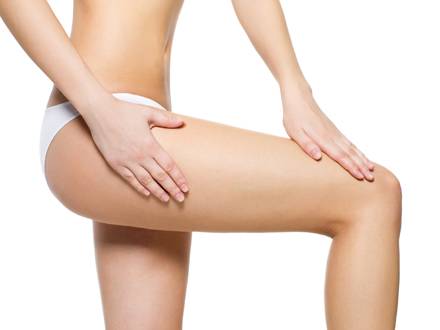Waif-thin catwalk models, bikini-clad celebrities and hemlines that keep getting shorter have contributed much to the ‘standard’ body image of women: ample busts, small waists, and lean inner thighs.
Some women’s desire to have a thigh gap – that space between the inner thighs when you put your knees together – has bordered on obsession and driven them to extreme diets and exercise, sometimes with results that are nowhere near desirable. Others have considered going to an aesthetic laser clinic for immediate results.
What many should be aware of is that no one can exercise or diet their way to leaner inner thighs. This is because having – or not having – a thigh gap has all to do with a person’s bone structure and nothing else. Some naturally have it; some will never have it, no matter the amount of effort.
The Anatomy of Thigh Gap
Exercise physiologists in medical clinic in Singapore and elsewhere are aware that differences in pelvic structures, especially among women, can predispose a few to have more gap than the others. The width and depth of the pelvis’ sockets, and the angles of the bony interactions of the pelvis and femurs not only affect a person’s ability to do deadlift, squats, move laterally and touch their toes, but also the way their thighs look when standing upright. A pelvis that is much wider and has a femoral neck angle closer to 90° will have greater spacing between the thighs, regardless of leg length, muscle mass, and body fat.
 Another reason is the thickness of the adductor muscles of the inner thigh in relation to the tendon. Others were born with thick adductor muscles higher up in their thighs, reducing the chances of having a bigger thigh gap.
Another reason is the thickness of the adductor muscles of the inner thigh in relation to the tendon. Others were born with thick adductor muscles higher up in their thighs, reducing the chances of having a bigger thigh gap.
So women who rigorously exercise and diet to the point of malnutrition in the hopes of achieving thigh gap and not getting anywhere closer to their goal may have configurations that are naturally endomorphs, a body type that is pear-shaped with a high tendency to store fat. From the physical fitness perspective, the endomorph is the most difficult body type to have their weight reduced. This translates to doing hours on the treadmill and still not getting the lean thighs you want; muscular, yes; but thigh gaps, not likely.
Coolsculpting Singapore Treatments to Open the Gap
The main complaint of those who have accepted the fact that they will never have a thigh gap is the discomfort that comes from chafing, which may not be a serious problem but can be irritating (to both the person and the skin). There’s also the lack of self-confidence to wear shorts, or simply the overwhelming desire to just fit into skinny jeans. It is for these people that a non-invasive fat-freezing procedure called Coolsculpting would work best.
Coolsculpting clinics operate on the principles of cryolipolysis. Fat cells are actually receptive to low temperatures, and laser clinics in Singapore using cutting-edge tools can deliver low temperatures to target areas while protecting the skin surface. Fat cells will start to die off within a month of the procedure, and are reduced naturally by the body. The result is a thinner fat layer, and that result can be permanent as long as regular exercise and judicious diet are observed.
- If you would like to be an informed patient, please contact us at +65-6801-4000 or
cutis@cutislaserclinics.com. - Cutis Medical Laser Clinics, 9 Scotts Road Pacific Plaza, Scotts Medical Center #08-07, Singapore – 228210
+65-6801-4000 - cutis@cutislaserclinics.com
